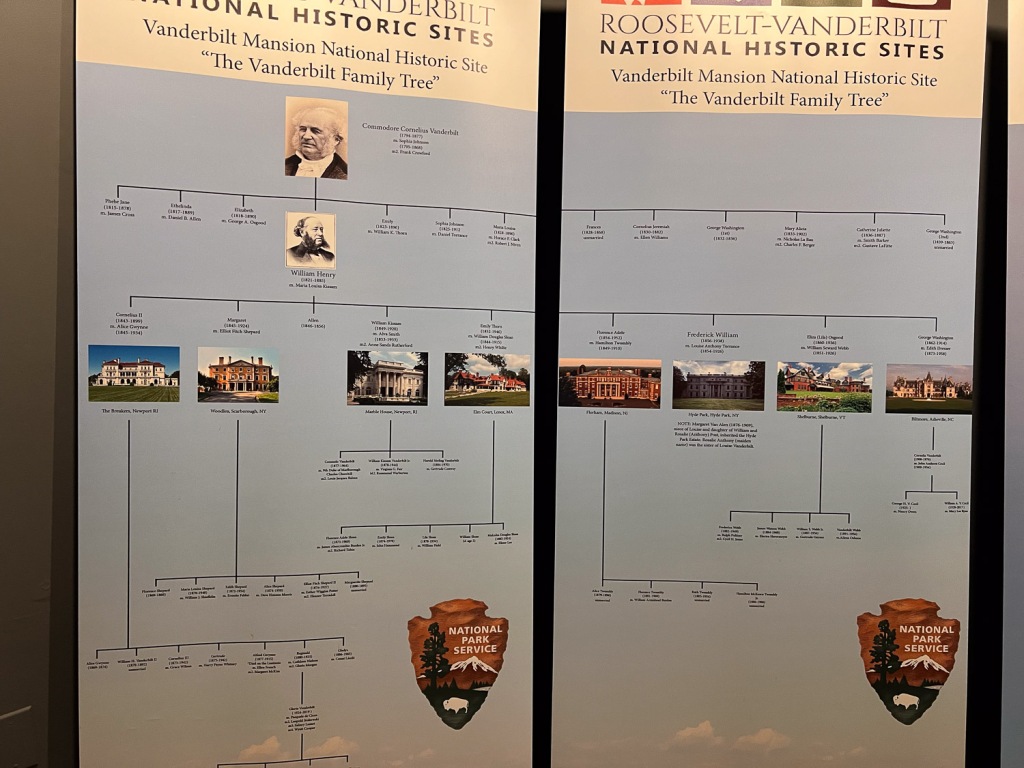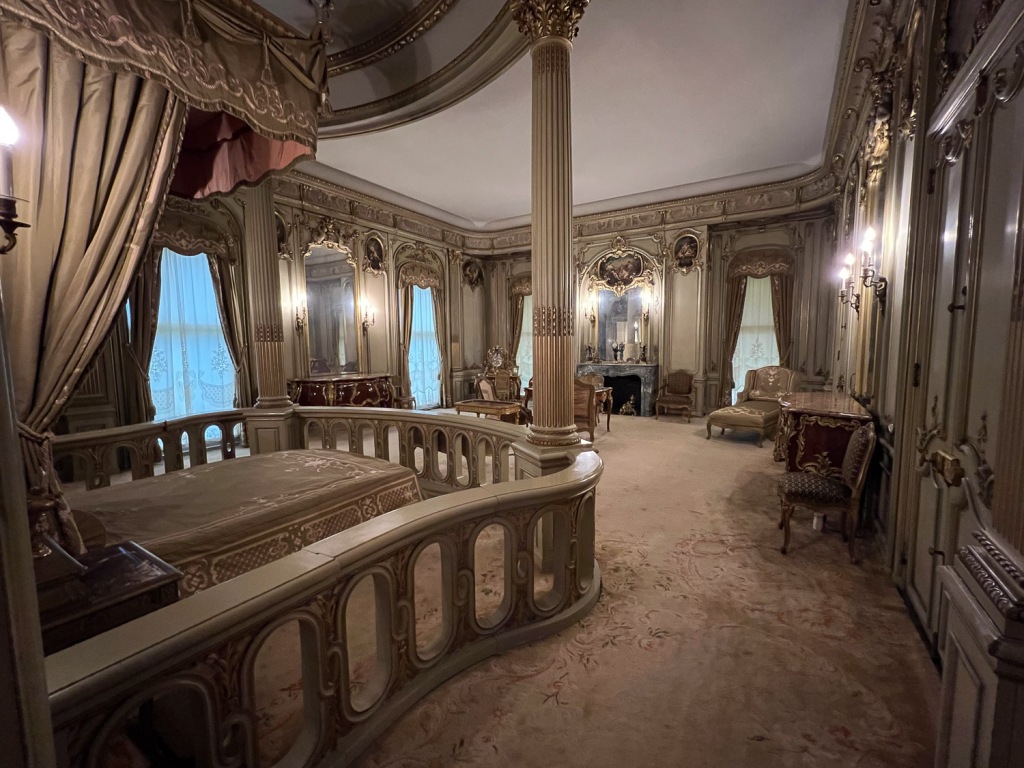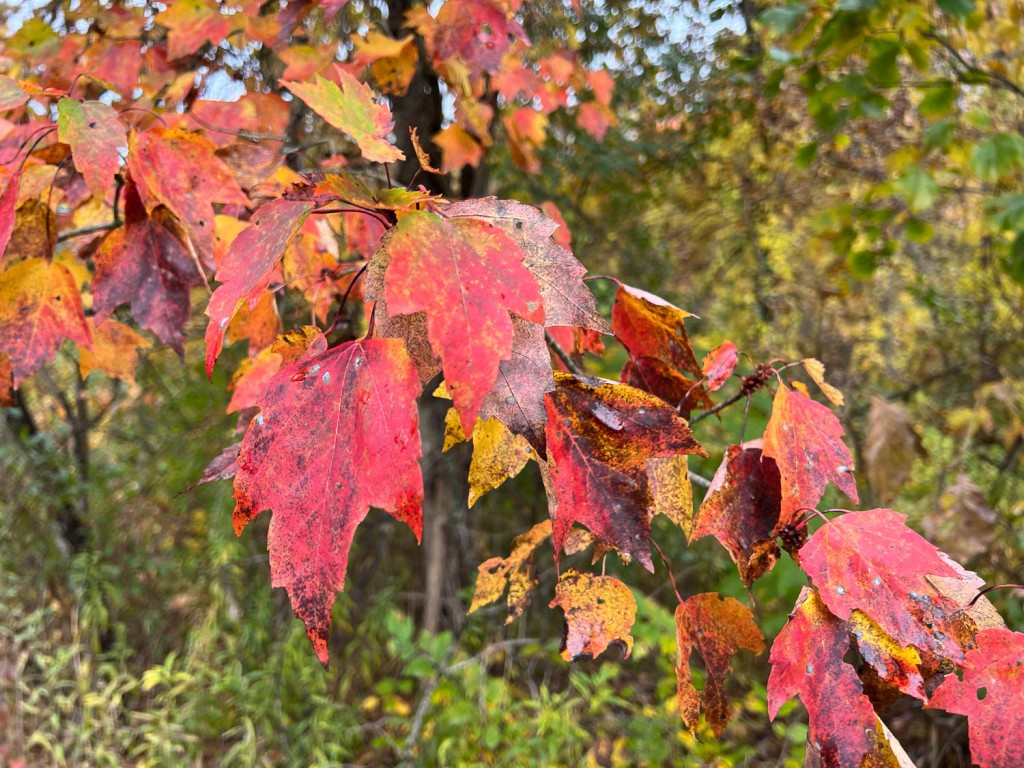I talked about Day 2 here. Now that I’m numbering the days I see that I have it wrong. Day 1 was really a travel day. We left Sacramento on Tuesday at 11:45 and got to Albany well after dark. That’s why I didn’t count it. I’ll stick with the current numbering system that forgets the travel day.
Kathleen and I both entered handwoven items at the show and needed to deliver them on Friday. That was the first stop of the day.

After delivering our items we drove back to Hyde Park so we could tour the Vanderbilt Mansion. This family tree starts with Cornelius, born in 1794. At age 16 he bought a sailing barge using $100 borrowed from his parents. He started his own shipping business and eventually was involved in railroads. In 1871 he opened the largest strain station in North America, which would eventually be called Grand Central Station. The bulk of Cornelius’ estate went to the firstborn son, William. Wlliam doubled the Vanderbilt fortune and each of his 8 children built extravagant mansions, shown on the chart above. The estate on the far right is the one I toured last summer in Asheville, North Carolina, known as “America’s Largest Home”. Notice on the family tree there are no heirs for Frederick’s home, third from right.

Frederick and his wife, Louise, had no children. They left the estate to Louise’s niece but she didn’t need it, having plenty of her own money and a mansion, after marrying into another rich family. She tried to sell the property but there were no buyers. Her neighbor, President Franklin D. Roosevelt, suggested that she donate the estate to the National Park Service, and the Vanderbilt Mansion National Historic Site opened in 1940.

The entrance hall was used for seating and conversation as well as having doorways into all the other first floor rooms. The green marble pilasters were imported from Italy. (From Wikipedia: “In classical architecture, a pilaster is an architectural element used to give the appearance of a supporting column and to articulate an extent of wall, with only an ornamental function.“) We were told that many of the home’s features and furniture were imported from Europe.

Reception Room. The National Historic Site website says: “Eighteenth-century-style French salons were a typical feature of Gilded Age mansions. Though infrequently occupied or used, they nonetheless were essential in the display of wealth and worldliness.“

I took this photo of the ceiling in one of the rooms. I think it was the Reception Room.

This is on the second floor where you can look down to the first …

…or up to the skylight.

Mrs. Vanderbilt’s bedroom modeled after those of 18th century French royalty. The railing around the bed was typical of royal bed chambers. I don’t remember if this was determined to be true, but the tour guide told us one theory that there may be observers when a Queen gives birth so there is no question about who is the true heir. I just found this on the National Historic Site website: “The railing around Mrs. Vanderbilt’s bed is an architectural convention borrowed from many European royal palaces. In the 17th and 18th centuries, it served both practical and symbolic purposes related to royal births and ceremonies that occured daily when the king or queen woke up. At Hyde Park, the railing serves no purpose other than to reference the architecture of Europe’s finest royal houses.”

I don’t remember what this room is but looking at the map I think it is probably the Boudoir.

We took the stairway to the Servant’s Basement.

This is the view from below. There are four floors (including the basement), 54 rooms and 21 fireplaces. The third floor is closed to visitors and we were told that it is not as it originally was, being used to house Secret Service agents at some point in the history of Hyde Park. There is much more information to be found on the referenced website.

Change of scene… We stopped at the Eveready Diner in Hyde Park for lunch and met up with California friend, Siobhan, here. I didn’t drive during this whole trip and kept losing track of which town we were near. We stayed outside Tivoli, New York and drove to Rhinebeck, only 11 miles south. Hyde Park is only another 10 miles south of Rhinebeck. So we were back and forth on that same corridor for the whole trip.

On the way home (to our AirB&B) we took a side road to see some of the countryside.


Fall colors in evidence.
To be continued…
